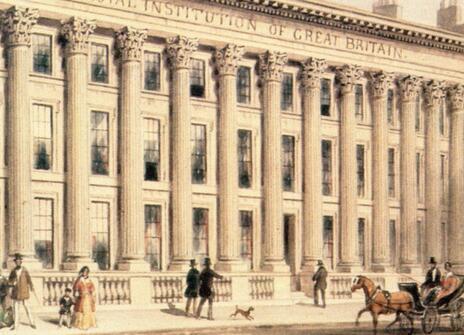Date: October 1831
Place made: Basement Laboratory of the Ri
Alternative name: Dynamo
Materials: Wire, cotton, iron, card, copper
Measurements: H: 280mm, W: 220mm, D: 40mm

Description
This is Michael Faraday’s generator. This apparatus consists of a tube of neutral material wound with a coil of wire, insulated in cotton, and a bar magnet.
Ten years after Faraday created the electric motor he returned to his electrical research and discovered electromagnetic induction in August 1831. A few months later he successfully conducted an experiment using this apparatus and demonstrated the relationship between magnetism and motion.
Faraday connected his apparatus to a galvanometer (an instrument that detects electrical current) and discovered that when he passed the magnet back and forth through the coil of wire, which remained stationary, the needle of the galvanometer leapt into action registering a current flowing.
As the magnet moves the lines of magnetic force repeatedly intersect with the wire exciting the electrons in the wire and generating electrical current. So if you exchanged the galvanometer with a light bulb today you would see it light up.
Virtually all electric power is produced using Faraday’s principles, no matter whether the prime source of energy is coal, oil, gas, nuclear, hydro, or wind: all these fuels are used to drive a generator (or turbine) which generates the electrical current.
Where can I view this?
This object is currently on display in the Lower Ground Floor of the Faraday Museum.






